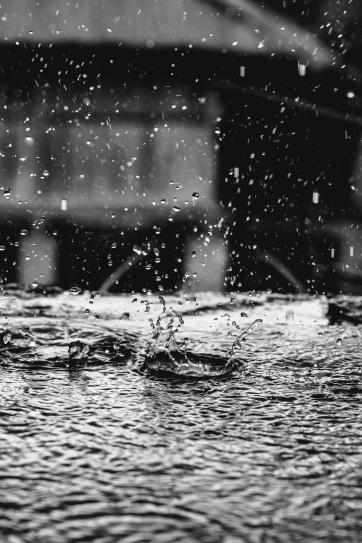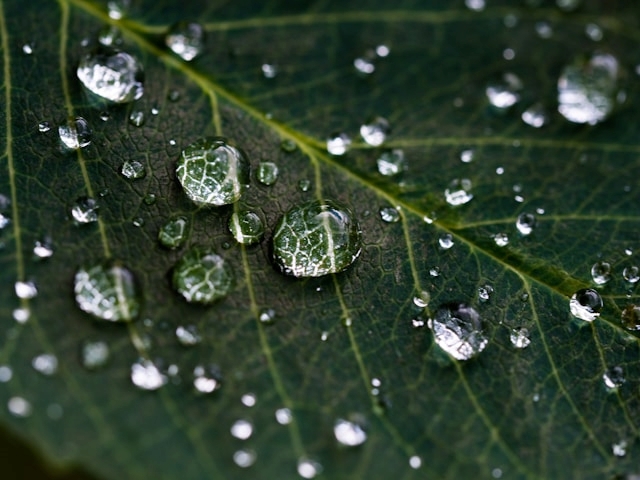Photo by Dan Carlson from Unsplash
When thunder strikes, some children shout out of fear because of its frightening sound, breaking the silence of their homes. Meanwhile, some would find a ray of sunshine behind the dark clouds because it signifies a wonderful adventure.
When thunder strikes, it usually rains. And when it rains, it literally pours. It pours activities to children. But inside their curious heads comes an easy yet complicated question. Why does it rain?
In this article, we will answer that curiosity as we delve into children’s guide about the rain and a glimpse of its process.
The Pitter-Patter of Raindrops: A Sound of Curiosity
Enjoying the monsoon season means enjoying various activities.
Children who enjoy indoor activities would love to savor chocolate cookies paired with hot chocolate or any delightful treat prepared by their parents. Some would be into creative pursuits like drawing and crafts and take it as a chance for learning opportunities. However, children who love outdoor activities are usually accompanied by their parents or someone older than them who acts as their guide on some wet and slippery roads. We don’t want to spoil the fun with possible mishaps, right? After all, safety is still the utmost priority.
More often than not, rain is truly a splash-and-splatter show for children. Outside their homes, they soak themselves in puddles and stomp their joyful feet on the grass. Some would even enjoy a muddy adventure and create something out of it.
But the pitter-patter of the raindrops and the feeling that the sky never runs out of water will trigger an aha! moment and create a chain of questions about their surroundings.
What is rain? Why does it rain? How does rain form?
Can Children’s Guide about the Rain Drench Them to Life Experience?
Children’s inquisitiveness comes to overflowing as the rain flows around them.
The detailed scientific explanation needed to answer those questions would be too complex for their intrigued young minds. How to explain rain to children should be logical but using true-to-life examples. It’s best to use real objects around them to understand. This way, it will be within their grasp.
A sponge and a dropper are one of the children’s guides about the rain. Through realia, children can easily comprehend the process of rain as these two are readily available at home. If there’s no dropper, you can use an alternative. The sponge represents the clouds. The dropper will act as the source of water later on. Imagine a cloud is a fluffy sponge.
When you gradually add water to a sponge using a dropper, it becomes so full that it starts to drip. Well, that’s what happens to clouds. They collect tiny water droplets in the sky. When they get too full and heavy, they can’t hold all the water anymore, so it falls as rain. A complex and complicated concept can be simplified using practical examples.
But what do we learn from that? We can learn that rain is water. One of the characteristics of water is fluidity and adaptability. When the water can no longer take it, it falls and transfers to another place. It is open and uncomfortable to changes.
Heaven’s Tears: Divine Intervention as Children’s Guide to Rain

Aside from citing practical examples, rain could also be explained to children as a divine intervention. Therefore, it could be described as something that comes from the above, from heaven——as an act of God.
In many societies, rain is considered a blessing. These silver-like raindrops from the sky are bringing life to the golden land below. The rain quenches the thirst of the parched earth and nourishes all living creatures. It is because water is life. As heaven’s cry, life on land leaps for joy for the blessing they receive. For people experiencing extreme dryness or drought, it is more than just a blessing but an act of mercy from God. It is a life-giving force that sustains.
Immersing children in this school of thought will guide them to appreciate the importance of water through rain. These teach them to be mindful of nature and not take things for granted.
Final Thoughts
In the end, rain is more than just a natural phenomenon; it extends its glory beyond physical manifestation. It teaches several virtues significant in navigating towards our journey. It conveys beautiful life lessons like learning to be adaptable to certain situations and being open to change. Above all, it inculcates the ability to cherish things and give importance to nature and life in general. Instilling these values in children from a young age will help them lay a strong moral foundation.
Children’s books, such as those written by Teresa Haven Pelinski, offer powerful storytelling and visual imagery that can shape a child’s worldview. Don’t wait to rain cats and dogs to know more about it. Experience the magic of a mother’s love through Jensen’s Lullaby brought to life by Pelinski’s heartfelt melody.
- Top 10 Best Bedtime Stories for Newborns: Book Recs to Read! - November 26, 2024
- From the Sky to Ground: A Children’s Guide About the Rain - October 29, 2024
- How to Teach Children About the Weather: Easy Tips for Parents and Teachers - October 29, 2024


Recent Comments